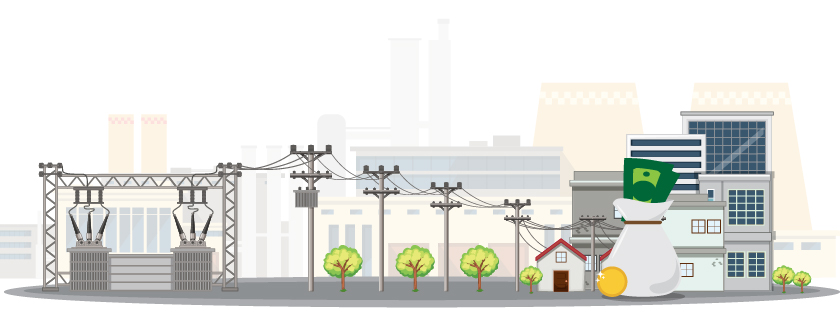- What is Capital Expenditure?
- Example of capital expenditure calculation
- Methods of Capital Expenditure
- Significance of Capital Expenditure
- Challenges with Capital Expenditures
- Tips for Efficient Capital Expenditure Practices
Capital investment decisions are among the most important decisions taken by firms because they affect shareholders wealth, the long - term perspective of the firm's survival, competitive advantage and also the overall economic welfare of society.
Firms around the world invest considerable amounts of money on capital expenditures in order to increase financial performance, maximize revenue, and maintain a competitive position in the market.
What is Capital Expenditure (CAPEX)?
Capital Expenditures are the category of assets that generally indicate the most important use of a company's resources. Investments in fixed assets such as buildings, equipment and machinery increase the firm's production capacity in order to increase the long-term profitability of the company. It is also known as CAPEX or Capital expenses.

Example of capital expenditure calculation
Let us say you own a store and you purchased machines and equipment for the efficient running of your store. The depreciation in that year was Rs. 5,000 while the PP&E for the current period is Rs. 4,000 and the PP&E for the previous period was Rs. 2,500. Using these three amounts, we can easily calculate the capital expenditure as follows.
Capital expenditure = (Rs. 4,000 – Rs. 2,500) + Rs. 5000
Capital expenditure = Rs. 6,500

Methods or Types of Capital Expenditure
There are normally two forms of capital expenditures:
- Expenditure for the maintenance of levels of operation present within the company
- Expenditure that will elevate the future growth.
A capital expense can either be tangible, such as a machine, or intangible, such as a patent. Both intangible and tangible capital expenditures are usually considered assets since they can be sold when there is a need.
It is important to note that funds spent on repair or normal maintenance on assets is not considered capital expenditure and should be treated as an expense on the income statement whenever it is incurred.
Significance of Capital Expenditure
Capital Expenditure decisions as to how much to invest can often be extremely vital decisions made by an organization. They are important because of the following reasons:
Long-term Influence
The outcome of capital expenditure decisions usually extends into the future. The diversity of current production or manufacturing activities is mainly a result of past capital expenditures. Similarly, the current decisions on capital expenditure will have a major influence on the future activities of the company.
Irreversibility
When capital equipment is purchased, there is little less room to reverse the decision since the cost can often not be recouped. Wrong capital investment decisions are often irreversible and poor ones lead to substantial losses being incurred. Once capital equipment is acquired, it is required to be employed for use.
Huge Initial Outlay
Capital expenditures are characteristically very expensive as an investment in physical assets like buildings, equipment, or property. Though they have the potential of providing benefits in the long run but need a huge monetary outlay initially, and much greater than regular operating outlays.
Depreciation
Capital expenditures lead to an increase in the asset accounts of an organization. We know that when capital assets are out to use in service, their depreciation begins, and they continue to decrease in value throughout their useful lives.
Challenges with Capital Expenditures
A company needs to carefully consider before making capital expenditures because it needs to think of the long-term implications of such expenditure. The three major challenges of capital expenditures are as follows.
Measurement Problem
Capital expenditures are tough to measure because it is not possible to measure the intangible. For example, if a certain system was put in place to encourage employees to work harder, it is difficult to measure if the goal was reached. Of course, questionnaires and other options are available, but capital expenditure cannot be measured in terms of numbers that are shown in the financial statements, such as the company’s balance sheet. At other times, it is tough to keep track of all costs associated with the assets.
Unpredictability
No one can guarantee the outcome of investing in capital assets and this unpredictability factor makes it challenging for businesses. Experts recommend using risk management to mitigate the loss related to the capital assets over time, it is not possible to predict the future because it is uncertain. Some losses can potentially cripple the business, while sometimes the losses are way less than the value that capital assets provide.
Temporal Spread
The expenses and advantages of capital expenditure are extended over a significant stretch for both industrial and infrastructure projects. Such a temporal spread prompts issues in discount rate assessment and the foundation of equivalence.
Cash-strapped situation
Investing in capital expenditures can mean it will take a longer time to understand and fully grasp the advantages. For instance, if the benefits are not visible after a short period, then it becomes almost impossible for the business to estimate the discount rate and establish equivalence. The cash that is tied to the capital asset cannot be used to invest elsewhere, which is a major challenge for all types of businesses.
Tips for Efficient Capital Expenditure Practices
Major capital projects involving huge amounts of money, as well as capital expenditures, can get out of control quite easily if mishandled and end up costing an organization a lot of money. However, with effective planning, the right tools, and good project management, that doesn’t have to be the case.
Here are some of the tips that will ensure that the budgeting of capital expenditure is efficient.
Build a Structure
Capital expenditure budgets need adequate preparations before commencement. Otherwise, they might get out of control. It is at this stage that you should think about how many internal resources will be required by the project, including manpower, materials, finances, and services.
Long term Planning
At the start of your capital expenditure project, you need to decide whether you will purchase the capital asset with debt or set aside existing funds for the purchase. Saving money for the purchase usually implies that you will have to wait for a while before getting the asset you need.
However, borrowing money leads to increased debt and may also create problems for your borrowing ability in the future. Both choices can be good for your company, and different choices might be needed for different projects.
Accuracy of Data
Information or statistical data is very crucial if you want to manage capital projects efficiently. To create a realistic budget and generate valuable reports, you need to have reliable information. Using Accounting Software will be key for businesses to get insights and take suitable decisions.
Formulation of Policies
It is quite obvious that the management of capital expenditure in a large organization involves numerous employees, departments, or even regions, clear policies for everyone to follow should be put in place to put the budget on track.
As we all know, capital expenditure requires a huge outflow of cash and planning for it considering the various other factors is crucial. Budgeting and cash flow projection will help businesses to know the anticipated cash available and accordingly take the decision. Take a look at How to set Budget and view cash flow projection report in TallyPrime.

















